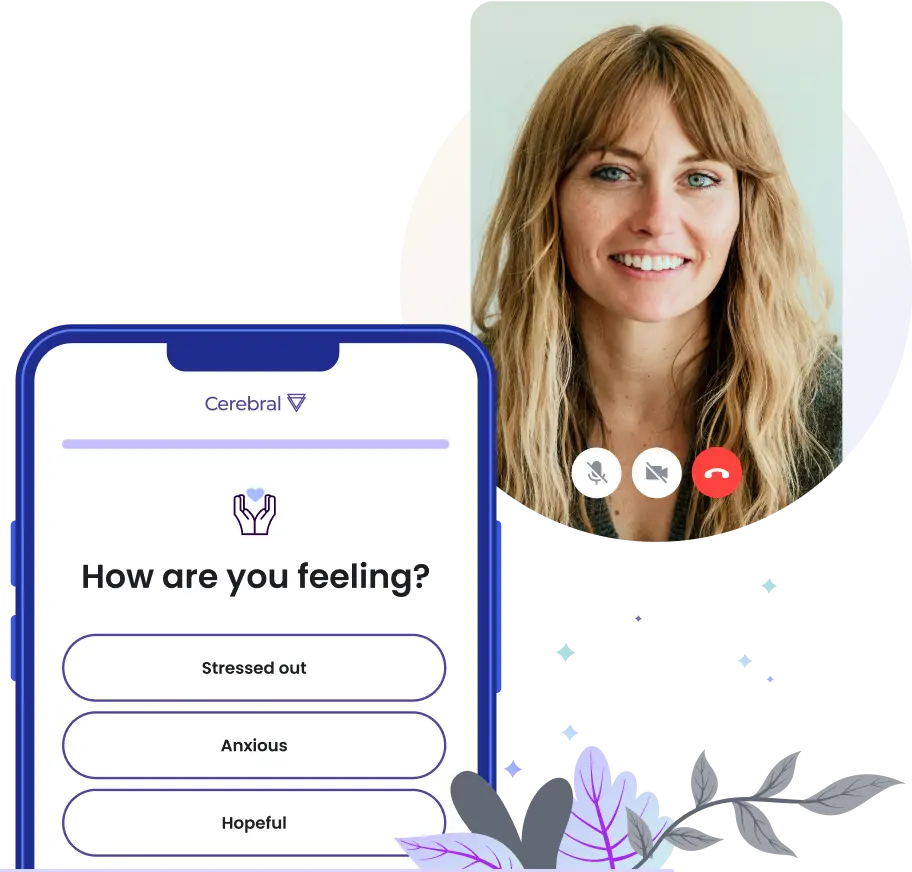Recognizing Burnout and What to Do About It


The demands of adulthood can feel relentless. The constant juggle of work and home responsibilities along with the expectation to be available online constantly makes achieving work-life balance increasingly elusive. It’s a surefire recipe for burnout.
Recognizing the signs of burnout and learning how to manage can be essential for maintaining mental health and overall well-being.
What is burnout?
Burnout is a state of emotional, physical, and mental exhaustion caused by prolonged or excessive stress. It often occurs when individuals feel overwhelmed, emotionally drained, and unable to meet constant demands. While it's commonly associated with work, burnout can also stem from other areas of life, such as caregiving, relationships, or academic pressures.
Causes of burnout
Several factors can contribute to burnout, including:
Excessive workload
If you’re consistently overloaded with work or responsibilities, it can lead to chronic stress and burnout.
Lack of control
Feeling like you have little or no control over your work or life circumstances can contribute to burnout.
Unclear expectations
When expectations are not clearly defined or constantly changing, it can create confusion and stress, leading to burnout.
Dysfunctional workplace dynamics
A toxic work environment, characterized by poor communication, lack of support, or unfair treatment, can significantly increase the risk of burnout.
Work-life imbalance
When work consistently takes precedence over personal life, it can lead to neglect of self-care, relationships, and hobbies, increasing the likelihood of burnout.
Insufficient rewards
Lack of recognition or inadequate compensation can decrease motivation and increase feelings of frustration.
Lack of Support
A lack of supportive relationships at work or home can exacerbate feelings of isolation and stress.
Signs of Burnout
Recognizing the signs of burnout is the first step toward addressing it. Common symptoms include:
- Physical Symptoms: Chronic fatigue, insomnia, headaches, and gastrointestinal issues.
- Emotional Symptoms: Feelings of helplessness, detachment, and a lack of motivation or satisfaction.
- Behavioral Changes: Increased irritability, withdrawal from responsibilities, and a decline in performance.
The differences between burnout and depression
Burnout and depression share similar symptoms, but they are distinct conditions. Burnout is usually linked to specific stressors (work, school, caregiving roles, etc) leading to exhaustion and decreased efficacy. On the other hand, depression is a broader mental health condition characterized by persistent sadness, a lack of interest in activities, and a pervasive sense of hopelessness.
Tips for dealing with burnout
If you're experiencing burnout, there are a few strategies you can implement to better manage it:
- Prioritize self-care: Make time for activities that nourish your mind, body, and soul, such as exercise, healthy eating, and relaxation techniques.
- Set boundaries: Learn to say no to additional work or commitments when you're already feeling overwhelmed.
- Delegate tasks: If possible, delegate tasks to others to reduce your workload.
- Take breaks: Step away from work regularly to recharge and avoid mental fatigue.
- Connect with others: Talk to friends, family, or a therapist about how you're feeling.
- Seek professional help: If self-care strategies aren't enough, consider seeking professional therapy to address burnout and develop coping mechanisms.
How to prevent burnout
Preventing burnout requires proactive measures to maintain a healthy work-life balance and manage stress effectively. Some preventive strategies include:
- Time management: Prioritize tasks, set realistic goals, and avoid procrastination.
- Stress management: Practice relaxation techniques, such as meditation or deep breathing exercises, to manage stress levels.
- Healthy lifestyle: Get enough sleep, eat nutritious meals, and exercise regularly to support your physical and mental well-being.
- Work-life balance: Set clear boundaries between work and personal life, and make time for activities you enjoy.
- Assertive communication: Learn to express your needs and concerns clearly and respectfully.
How professional therapy can support your mental health
If you're grappling with burnout, professional therapy may be able to support you in feeling better. A therapist may help you delve into the root causes of your burnout, exploring the underlying factors that have contributed to your current state. They may also equip you with healthy coping mechanisms to manage stress effectively and prevent future burnout. Additionally, a therapist may guide you in creating strategies to improve your work-life balance, establish clear boundaries, and prioritize self-care.
Prolonged stress and burnout can happen to anyone. Overcoming burnout and reclaiming well-being may be possible by recognizing the signs, taking proactive steps to manage it, and seeking professional help when needed.
*The information in this blog is provided as a general educational resource only, and is not to be used or relied on for any diagnostic or treatment purpose. This information should not be used as a substitute for professional diagnosis and treatment and does not create any patient-physician relationship between you and Cerebral. Please consult your health care provider before making any health care decisions or to get guidance about a specific medical condition.

6 Self-Care Tips for Stress and Burnout Recovery

How to Overcome Procrastination

How to Set Boundaries During the Holidays

Call 911 if you’re having a
mental health emergency
Text Home to 741-741 if you're in emotional
distress and need immediate support
Call or text 988 Suicide &
Crisis Lifeline. Chat service
is available at 988lifeline.org.